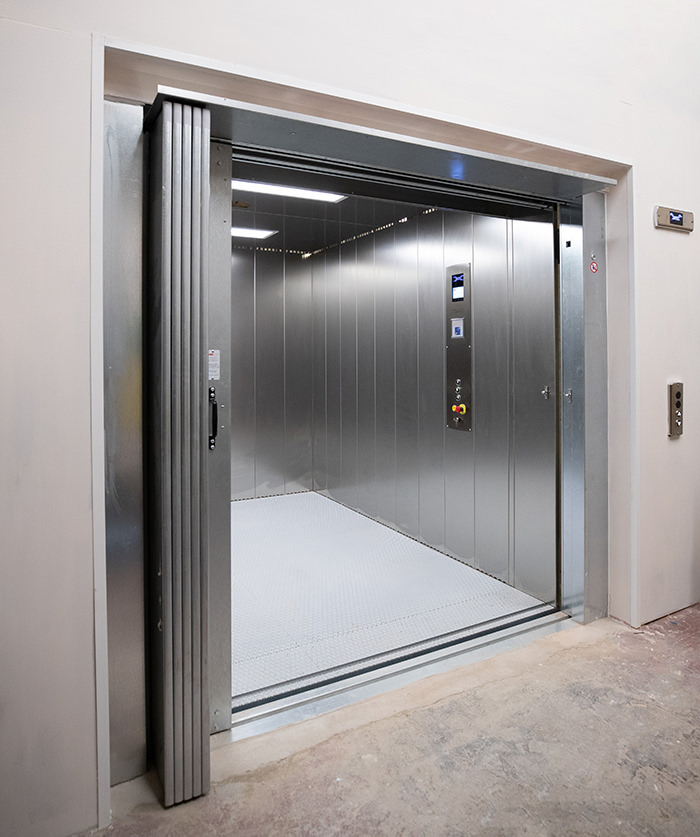London Lift Company: Giving Comprehensive Lift Solutions Across the Funding
London Lift Company: Giving Comprehensive Lift Solutions Across the Funding
Blog Article
Exploring the Globe of Elevators: Usual Issues Faced by Different Lift Mechanisms
As we navigate through the vertical transport systems of contemporary buildings, lifts stick out as an essential part of our everyday lives. Nonetheless, behind their smooth operation lies a globe of detailed devices that can often come across challenges. From hydraulic elevators to grip systems and machine-room-less designs, each lift kind comes with its collection of usual concerns. Comprehending these challenges is critical for making certain the smooth functioning of these important systems. Let's check out the complexities that underlie the operation of elevators and the possible issues that can emerge, shedding light on the detailed web of lift mechanisms.
Hydraulic Elevators
Hydraulic elevators, frequently liked for low-rise structures, utilize fluid stress to control the movement of the elevator vehicle (lift repair companies). This mechanism entails a hydraulic pump pushing oil right into a cylinder, creating the elevator to move in the desired instructions. While hydraulic elevators are understood for their smooth and peaceful operation, they do feature their very own set of common concerns
One common issue with hydraulic elevators is oil leak. In addition, problems with the control system, such as malfunctioning shutoffs or a malfunctioning pump, can cause disturbances in the lift's activity.
Routine upkeep and punctual repair work are vital to ensure the smooth performance of hydraulic lifts. By resolving these common concerns proactively, building proprietors can minimize downtime and make sure the security and effectiveness of their upright transport system.
Grip Lifts
When considering upright transport systems in structures, another typical kind apart from hydraulic elevators is the grip elevator. Traction lifts operate using a system of ropes and weights that move the lift car by clutching onto the hoist ropes. This device permits for smoother and much faster upright transportation compared to hydraulic systems.
Among the typical concerns dealt with by grip lifts is rope wear. The constant motion of the ropes within the grip system can lead to tear and put on gradually, possibly causing the lift to malfunction or end up being harmful for use. Routine inspections and maintenance of the ropes are vital to guarantee the lift's correct functioning and security.
An additional concern that grip elevators may experience is related to the control system. Problems with the control system can cause issues such as erratic motion, delays in feedback times, or even full closures. Regular testing and upkeep of the control system are crucial to avoid such concerns and ensure the lift's integrity.
Machine-Room-Less (MRL) Elevators

One of the key components of MRL lifts is the compact gearless grip device that is installed within the hoistway. This equipment effectively drives the elevator car without the requirement for large tools found in standard grip lifts. In addition, MRL lifts typically make use of a counterweight system to stabilize the automobile, more improving their power effectiveness.
In spite of their advantages, MRL lifts may encounter difficulties associated to repair and maintenance because of the confined space for equipment installment. Access for servicing parts within the shaft can be limited, calling for specialized training for professionals. Appropriate upkeep schedules and normal examinations are essential to make certain the ongoing smooth procedure of MRL lifts.
Overloading and Weight Limitation Issues
Are elevators outfitted to take care of excess weight loads successfully and lift repair near me safely? Overloading and weight limitation concerns are important issues in elevator operations. Elevator makers layout raises with details weight capacities to ensure traveler safety and equipment longevity. Surpassing these weight limitations can lead to different issues, including mechanical failings, delays, and safety risks.
When lifts are strained, it puts excessive stress on the electric motor, cords, and other parts, possibly creating breakdowns or failures. Safety and security devices such as sensors and overload sensing units are in location to protect against elevators from moving if they find excess weight. In addition, exceeding weight restrictions can cause increased power usage and wear and tear on the lift system.
To mitigate overwhelming concerns, building managers need to prominently show weight limits in elevators and inform residents on the significance of sticking to these limitations - lift repair companies. Regular upkeep checks by certified specialists can also aid ensure that lifts are operating within risk-free weight criteria. By dealing with overloading and weight restriction concerns proactively, structure proprietors can improve elevator safety and efficiency
Electrical System Failings
Surpassing weight restrictions in lifts can not just lead to mechanical problems but also potentially add to electrical system failings within the lift infrastructure. Electrical system failings are an important worry in elevator procedure, as they can trigger unanticipated closures, breakdowns, or even security risks.
Moreover, power surges or variations in the electric supply can likewise interrupt the lift's operation, impacting its efficiency and safety and security. These electrical disturbances can damage sensitive lift parts such as control panels, circuit card, or sensors, leading to system failures. Routine maintenance and examinations are vital to identify and resolve prospective electric concerns immediately, ensuring the efficient and safe operation of elevator systems. By sticking to weight limits and carrying out regular electrical system checks, we maintain lifts building proprietors can reduce the threat of electrical failings in elevators.
Conclusion

Hydraulic elevators, typically chosen for low-rise buildings, utilize fluid pressure to regulate the activity of the elevator car.When thinking about upright transportation systems in structures, another usual type aside from hydraulic elevators is the traction lift. Grip lifts operate using a system of ropes and counterweights that relocate the lift car by clutching onto the hoist ropes. Unlike typical lifts that require a separate equipment room to house the tools, MRL lifts integrate many of the elements within the shaft, getting rid of the demand for a dedicated maker space.In conclusion, lifts face usual issues such as hydraulic breakdowns, traction system failings, and electric system issues.
Report this page